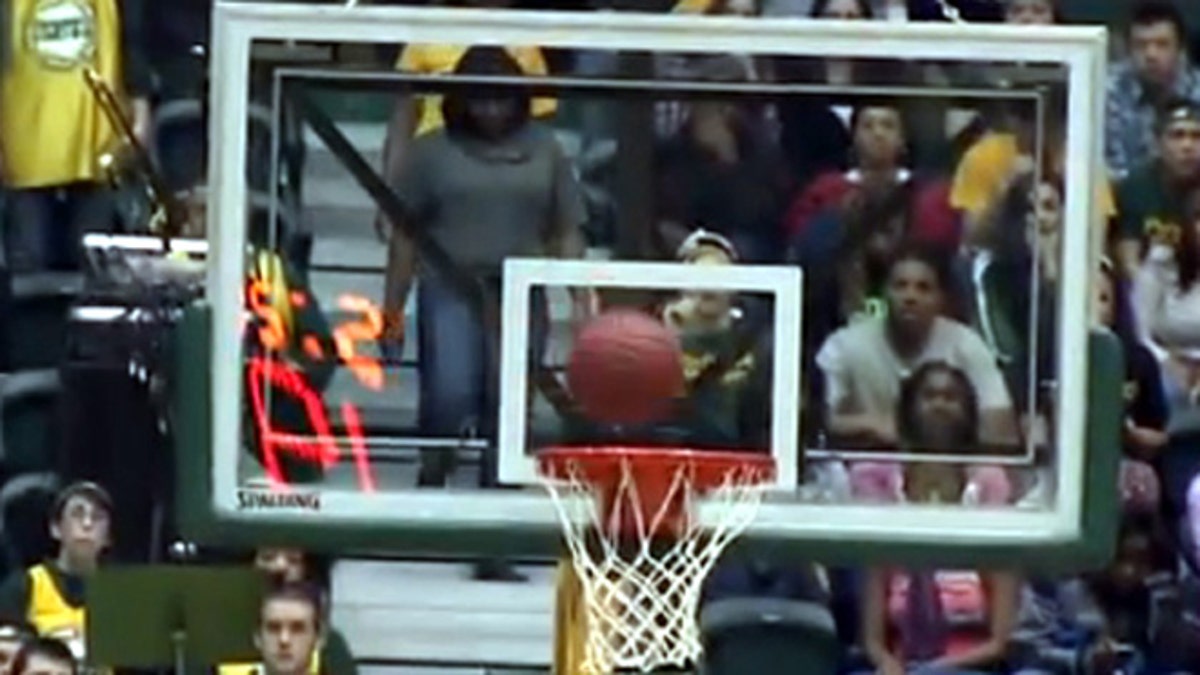
(Inside Science)
Many fans may wonder why so many NBA players struggle with free throws, such as newly acquired Los Angeles Laker Dwight Howard. He made just three of 14 attempts in his Oct. 30 season debut -- and less than one-half of his tries last season. New research may offer Howard and other NBA stars who struggle at the free-throw line a method to identify exactly why their shots go awry.
Using data from a 3-D optical tracking system, researchers studied the trajectory of over 2,400 free throws taken by 20 players during the 2010-11 NBA season. The researchers concluded that in most cases one or two factors are responsible for most misses, but that the cause of success or failure was not consistent: each player missed in his own way.
The research team, Allan Z. Maymin, Philip Z. Maymin, and Eugene Shen, comes from the world of finance. They study how to analyze and act on huge volumes of data via technical methods known as high-frequency and algorithmic-based trading.
Philip Maymin, a professor of financial engineering at the Polytechnic Institute of New York University, in Brooklyn, told Inside Science that many of these methods are applicable to analyzing sports.
"What we've been trying to do is apply the insights, tools and techniques from cutting-edge financial research to basketball," said Maymin.
The researchers examined the flight of free throws based upon a physical model that took into account five major factors, including backspin, launch height, velocity, angle, and left-right deviation. Their analysis, published in the Journal of Quantitative Analysis in Sports, can attribute a reason to each free-throw miss, such as if the shot was launched too hard or aimed poorly. Players seemed to miss for different reasons.
"The bottom line result is everybody's problem was different. There's no one thing that everybody is doing wrong," said Maymin. "If you look at [Dallas Maverick] Dirk Nowitzki's misses, they're completely different than [New York Knick] Tyson Chandler's misses. It's a completely different thing that needs to be worked on."
Larry Silverberg, a professor of mechanical and aerospace engineering at North Carolina State University in Raleigh, who previously studied free throws and bank shots, said the researchers asked an interesting question.
"This is one of the first [basketball] studies I've seen where they've really have tried to analyze what people are doing right or what people are doing wrong," said Silverberg. "By monitoring the trajectories, you can, in a more systematic way, identify what's wrong and then potentially give the opportunity for the player to improve what's wrong much easier."
The data was provided by STATS LLC, a company that collects and distributes sports statistics and analysis. They use a tracking system called SportVU to collect a continuous stream of data during basketball games as well as other sporting events.
"The system is built and optimized to collect location data," said Brian Kopp, the head of STATS' Sports Solutions Group.
For basketball, 25 times each second a set of six cameras collects position data on the 10 players on the floor, the referees, and the ball. The system is currently installed in 13 NBA arenas.
The system provides an immense amount of data, which can then be made richer through the combination with other data such as play by play information. Access to this new form of data made the new research possible.
"There's no way this would have been able to be answered without 25 frames per second looking at the center of mass of the basketball and the trajectory," said Maymin.
The data allows scientists to provide coaches and players with a new type of objective information.
"You have a lot of sports where you have motion of inanimate objects, like a basketball," said Silverberg. "In all those sports, you can analyze the trajectories of those inanimate objects, which is a little easier than analyzing the motion of a human body because the human body has more complex motions."
The researchers used just a small portion of the data for this project. The same kind of optical tracking data enabled another set of researchers to study rebounding at an unprecedented level.
Other analyses could illuminate important insights into defense or passing and even collect data that has never appeared in a box score, such as the distance run by each player during a game.
"We're beyond a lot of the initial technical hurdles and now the next challenge or the next hill to climb is, you're collecting all this data, you're linking it all together, now what does it tell me?" said Kopp.
Maymin said he and his colleagues have discussed the free-throw research with some NBA organizations. Next, they may investigate jump shots. However, the additional variables at play, including the shooter's motion before, during and after the shot, would make this much more difficult.




















